Abstract
The plasmid-determined inducible alkane hydroxylase of Pseudomonas putida resolved into particulate and soluble fractions. Spinach reductase and spinach ferredoxin could replace the soluble hydroxylase component. Two alkane hydroxylase mutants show in vitro complementation (S. Benson and J. Shapiro, J. Bacteriol., 123: 759-760, 1975): one, alk-7, lacks an active soluble component and the other, alk-181, lacks an active particulate component. Together with previous results on a particulate alcohol dehydrogenase enzyme (Benson and Shapiro, J. Bacteriol., 126: 794-798, 1976), these results allowed us to assay three plasmid-determined inducible activities: soluble alkane hydroxylase (alkA+), particulate alkane hydroxylase (alkB+), and particulate alcohol dehydrogenase (alkC+). Growth tests and in vitro complementation assays revealed three groups of plasmid mutations that block expression of alkane hydroxylase activity: alkA, which so far includes only the alk-7 mutation; alkB, which includes alk-181 and 11 other mutations; and a pleiotropic-negative class, which includes nine mutations that lead to loss of alkA+, alkB+, and alkC+ activities. Thus, the alk+ gene cluster found on IncP-2 plasmids contains at least four cistrons. We believe it is significant that two of these determined the presence of membrane proteins. The accompanying paper shows that these loci are part of a single regulon.
Full text
PDF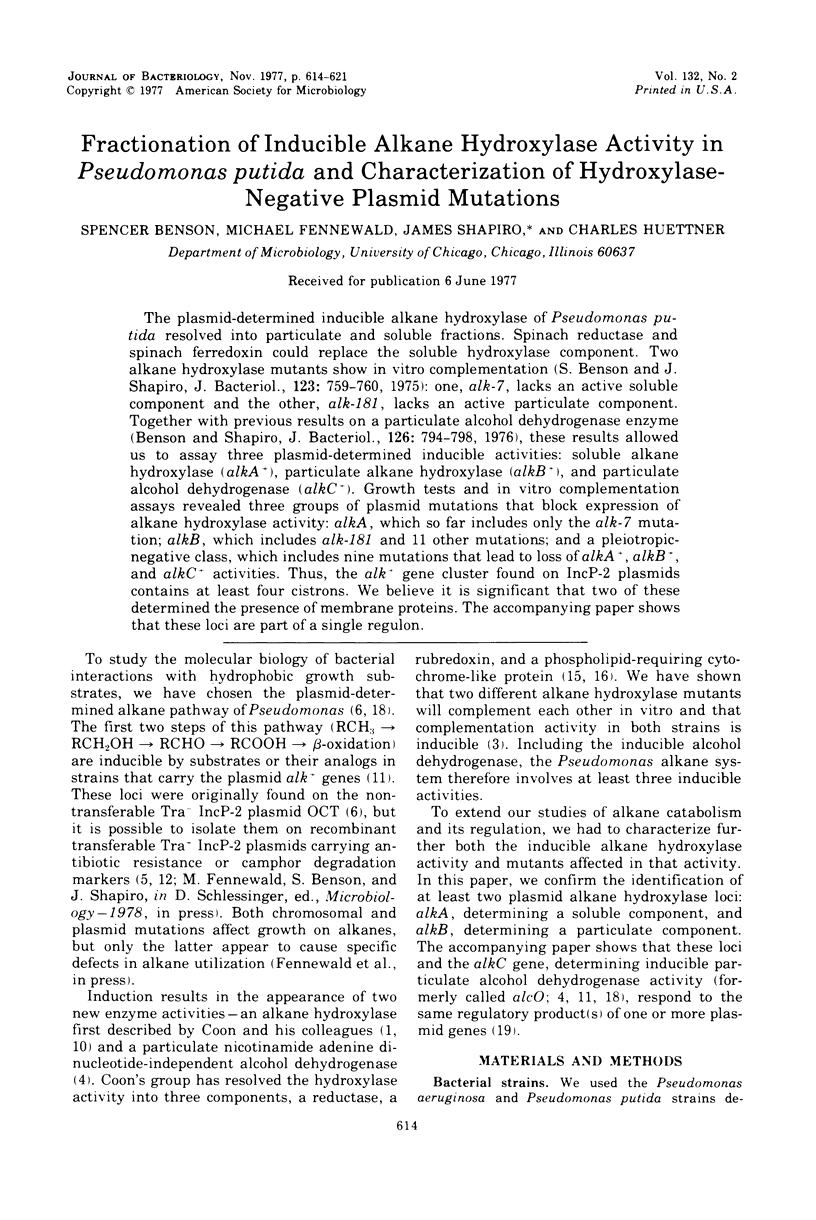
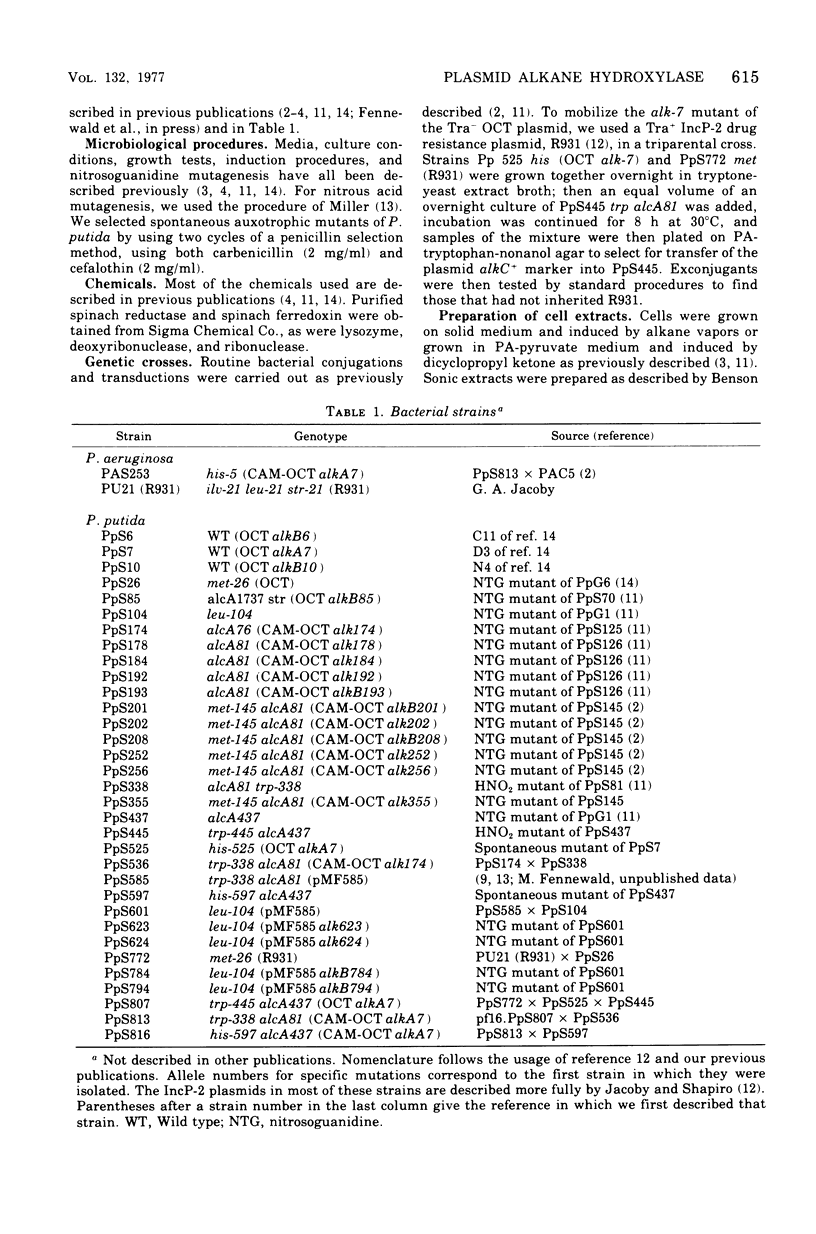
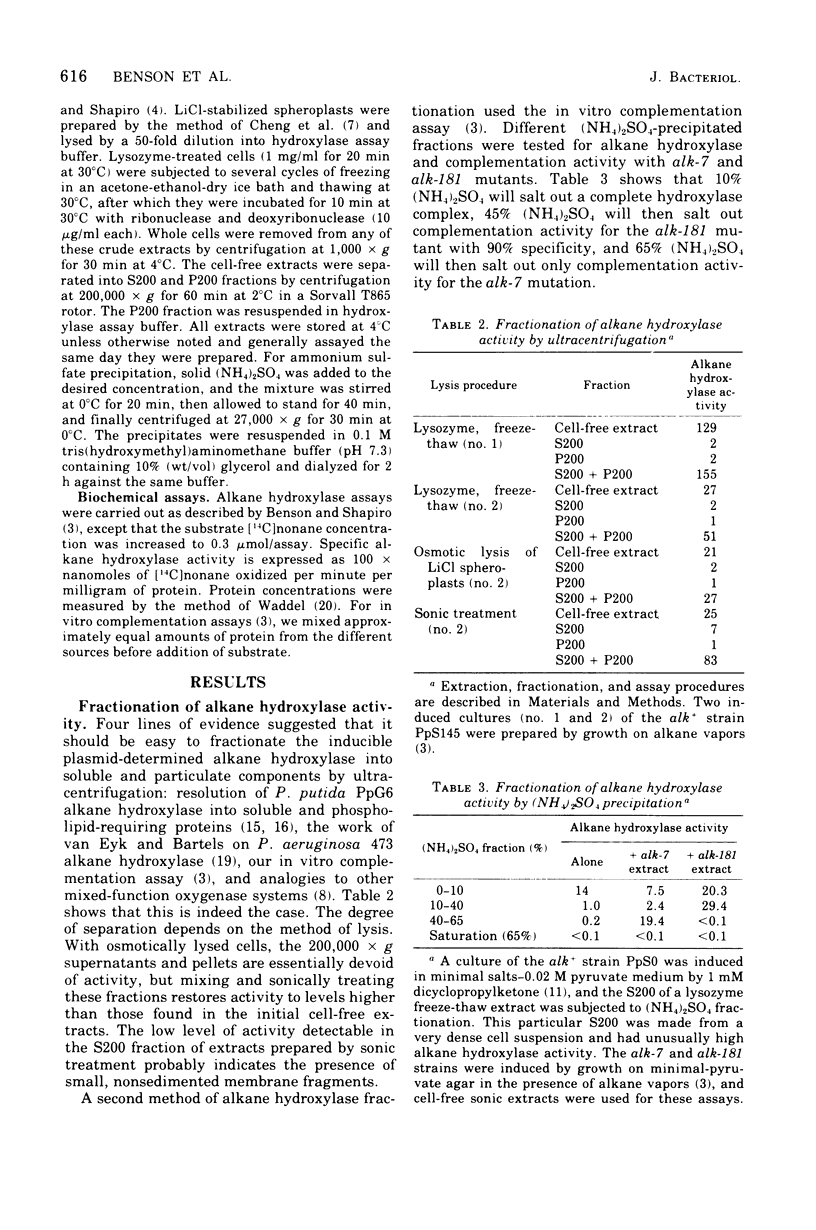
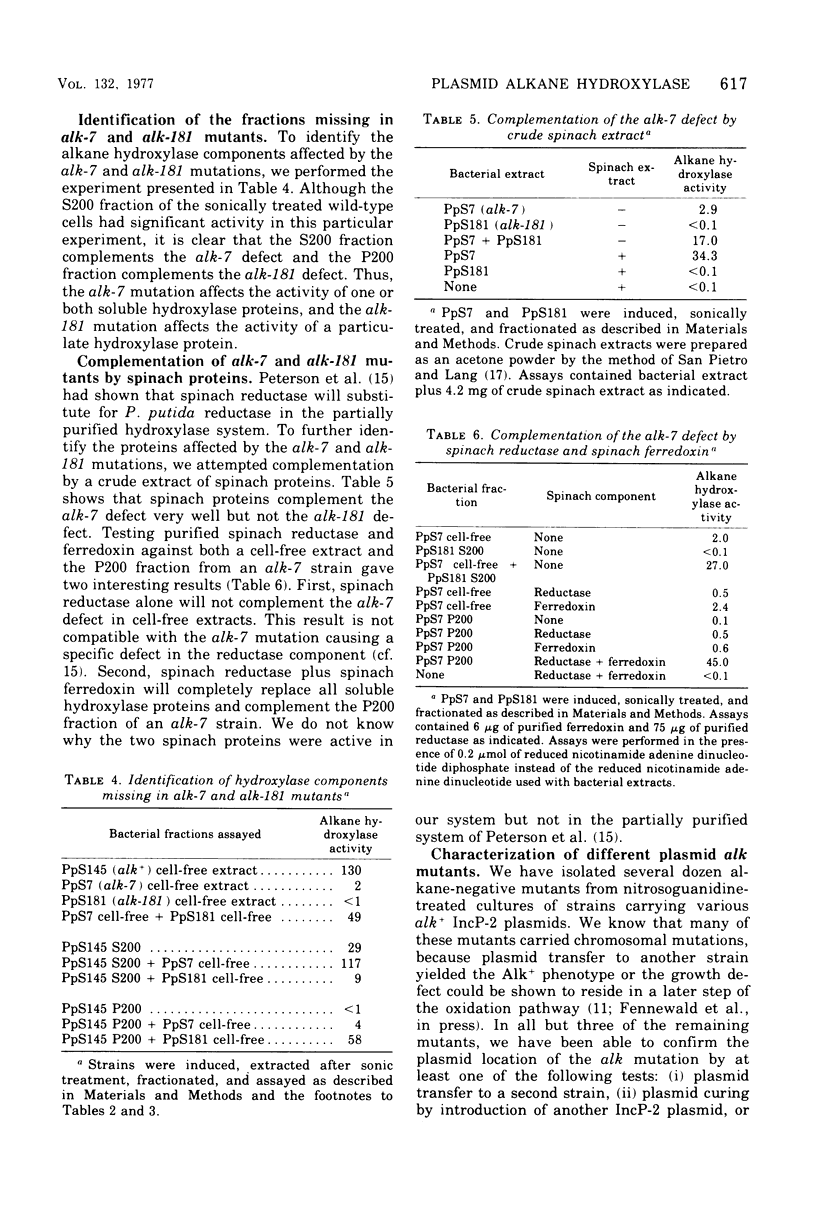
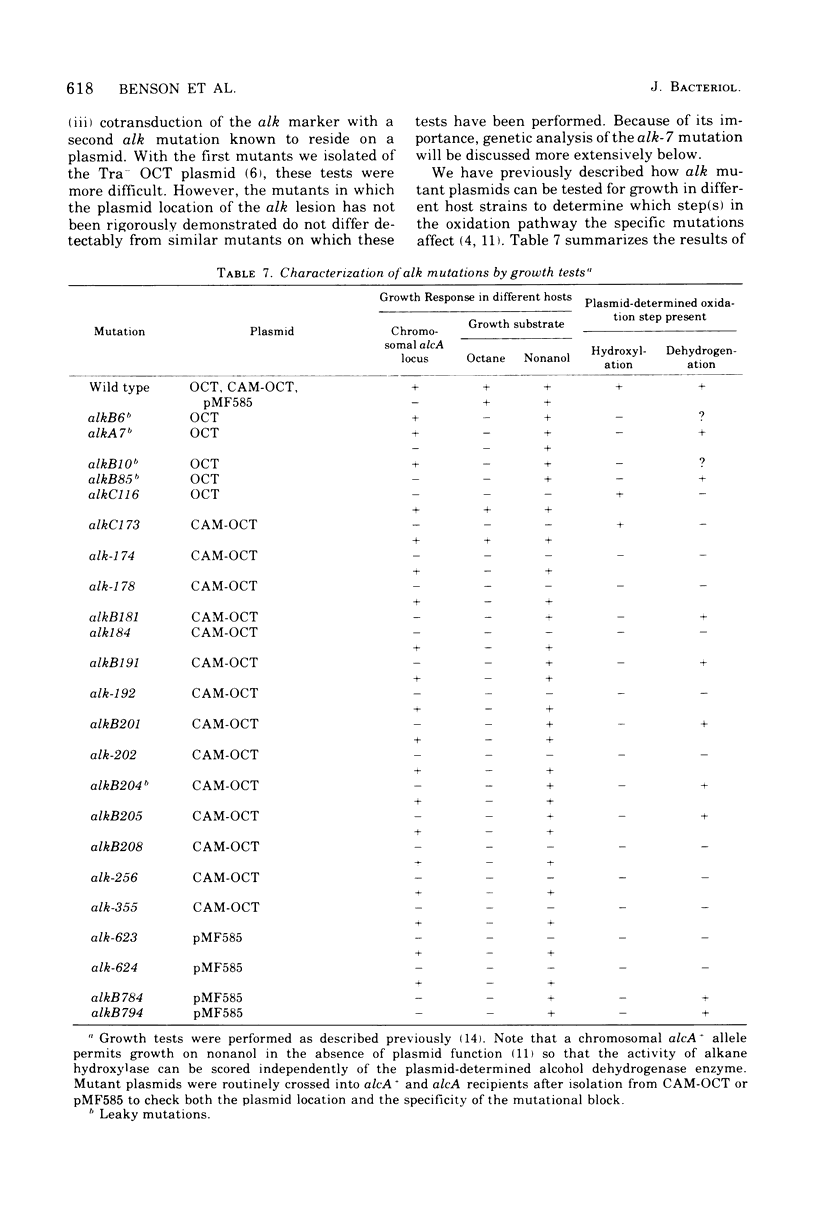
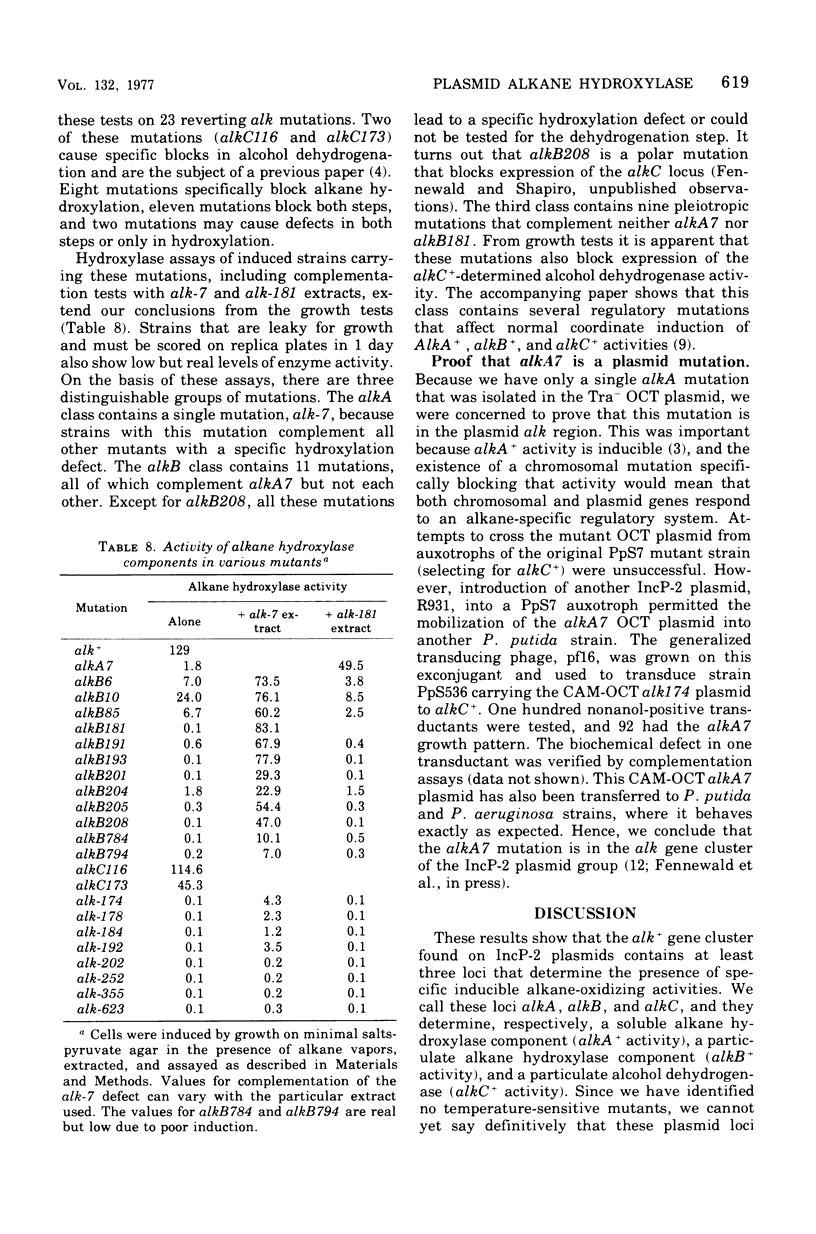
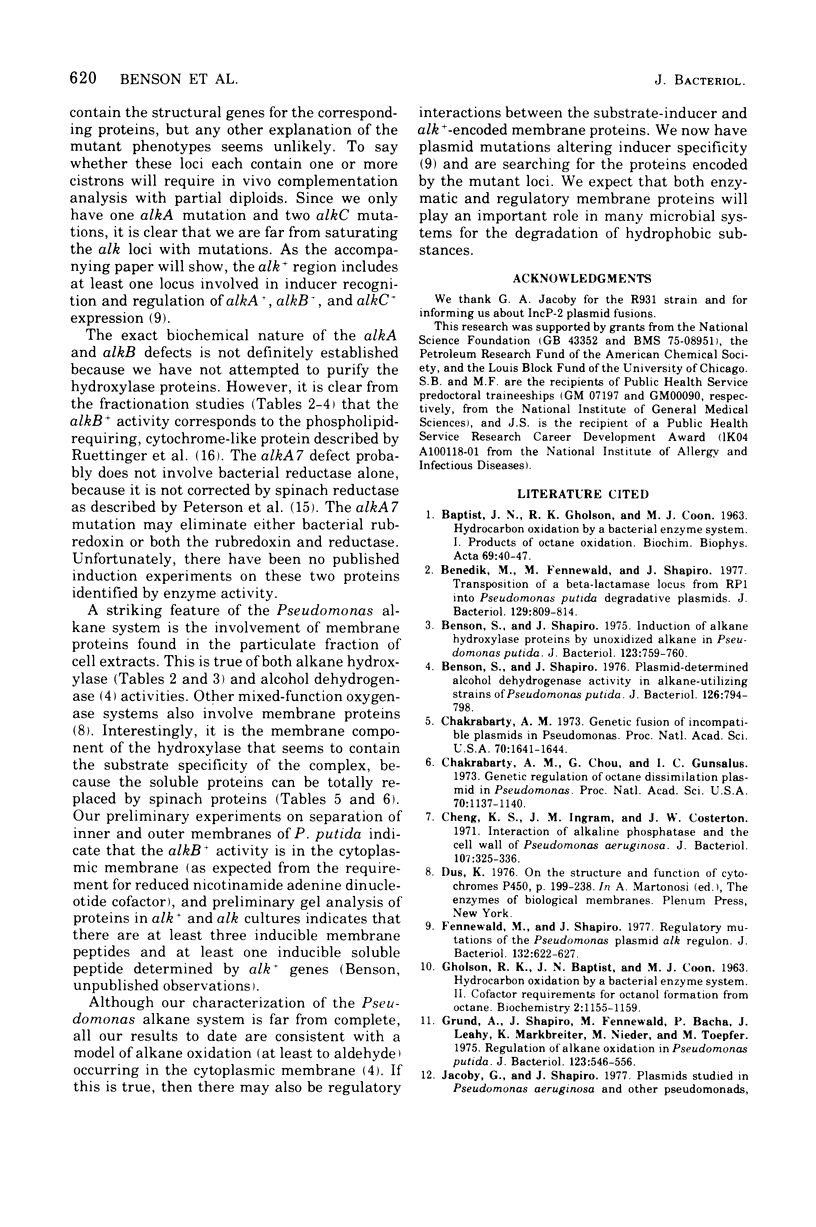
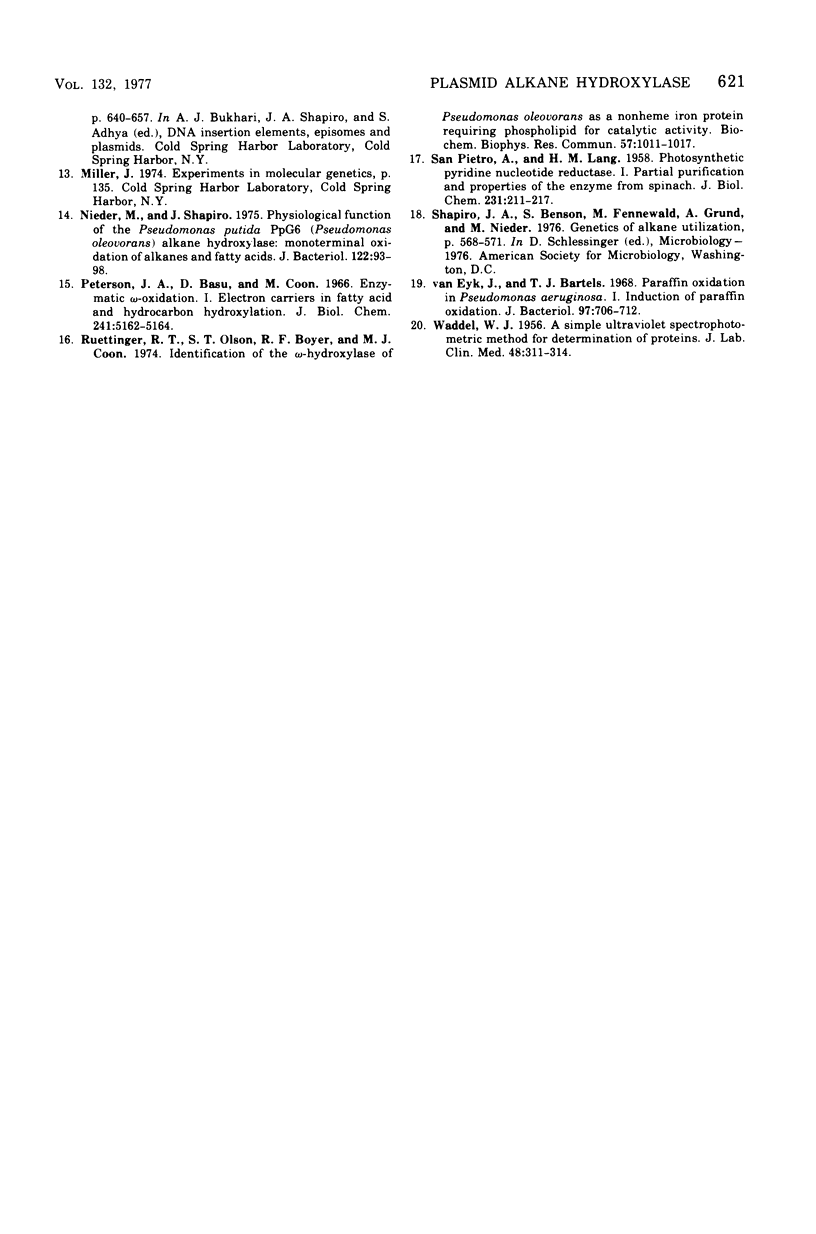
Selected References
These references are in PubMed. This may not be the complete list of references from this article.
- BAPTIST J. N., GHOLSON R. K., COON M. J. Hydrocarbon oxidation by a bacterial enzyme system. I. Products of octane oxidation. Biochim Biophys Acta. 1963 Jan 1;69:40–47. doi: 10.1016/0006-3002(63)91223-x. [DOI] [PubMed] [Google Scholar]
- Benedik M., Fennewald M., Shapiro J. Transposition of a beta-lactamase locus from RP1 into Pseudomonas putida degradative plasmids. J Bacteriol. 1977 Feb;129(2):809–814. doi: 10.1128/jb.129.2.809-814.1977. [DOI] [PMC free article] [PubMed] [Google Scholar]
- Benson S., Shapiro J. Induction of alkane hydroxylase proteins by unoxidized alkane in Pseudomonas putida. J Bacteriol. 1975 Aug;123(2):759–760. doi: 10.1128/jb.123.2.759-760.1975. [DOI] [PMC free article] [PubMed] [Google Scholar]
- Benson S., Shapiro J. Plasmid-determined alcohol dehydrogenase activity in alkane-utilizing strains of Pseudomonas putida. J Bacteriol. 1976 May;126(2):794–798. doi: 10.1128/jb.126.2.794-798.1976. [DOI] [PMC free article] [PubMed] [Google Scholar]
- Chakrabarty A. M., Chou G., Gunsalus I. C. Genetic regulation of octane dissimilation plasmid in Pseudomonas. Proc Natl Acad Sci U S A. 1973 Apr;70(4):1137–1140. doi: 10.1073/pnas.70.4.1137. [DOI] [PMC free article] [PubMed] [Google Scholar]
- Chakrabarty A. M. Genetic fusion of incompatible plasmids in Pseudomonas. Proc Natl Acad Sci U S A. 1973 Jun;70(6):1641–1644. doi: 10.1073/pnas.70.6.1641. [DOI] [PMC free article] [PubMed] [Google Scholar]
- Cheng K. J., Ingram J. M., Costerton J. W. Interactions of alkaline phosphatase and the cell wall of Pseudomonas aeruginosa. J Bacteriol. 1971 Jul;107(1):325–336. doi: 10.1128/jb.107.1.325-336.1971. [DOI] [PMC free article] [PubMed] [Google Scholar]
- Fennewald M., Shapiro J. Regulatory mutations of the Pseudomonas plasmid alk regulon. J Bacteriol. 1977 Nov;132(2):622–627. doi: 10.1128/jb.132.2.622-627.1977. [DOI] [PMC free article] [PubMed] [Google Scholar]
- GHOLSON R. K., BAPTIST J. N., COON M. J. HYDROCARBON OXIDATION BY A BACTERIAL ENZYME SYSTEM. II. COFACTOR REQUIREMENTS FOR OCTANOL FORMATION FROM OCTANE. Biochemistry. 1963 Sep-Oct;2:1155–1159. doi: 10.1021/bi00905a043. [DOI] [PubMed] [Google Scholar]
- Grund A., Shapiro J., Fennewald M., Bacha P., Leahy J., Markbreiter K., Nieder M., Toepfer M. Regulation of alkane oxidation in Pseudomonas putida. J Bacteriol. 1975 Aug;123(2):546–556. doi: 10.1128/jb.123.2.546-556.1975. [DOI] [PMC free article] [PubMed] [Google Scholar]
- Nieder M., Shapiro J. Physiological function of the Pseudomonas putida PpG6 (Pseudomonas oleovorans) alkane hydroxylase: monoterminal oxidation of alkanes and fatty acids. J Bacteriol. 1975 Apr;122(1):93–98. doi: 10.1128/jb.122.1.93-98.1975. [DOI] [PMC free article] [PubMed] [Google Scholar]
- Peterson J. A., Basu D., Coon M. J. Enzymatic omega-oxidation. I. Electon carriers in fatty acid and hydrocarbon hydroxylation. J Biol Chem. 1966 Nov 10;241(21):5162–5164. [PubMed] [Google Scholar]
- Ruettinger R. T., Olson S. T., Boyer R. F., Coon M. J. Identification of the omega-hydroxylase of Pseudomonas oleovorans as a nonheme iron protein requiring phospholipid for catalytic activity. Biochem Biophys Res Commun. 1974 Apr 23;57(4):1011–1017. doi: 10.1016/0006-291x(74)90797-9. [DOI] [PubMed] [Google Scholar]
- SAN PIETRO A., LANG H. M. Photosynthetic pyridine nucleotide reductase. I. Partial purification and properties of the enzyme from spinach. J Biol Chem. 1958 Mar;231(1):211–229. [PubMed] [Google Scholar]
- WADDELL W. J. A simple ultraviolet spectrophotometric method for the determination of protein. J Lab Clin Med. 1956 Aug;48(2):311–314. [PubMed] [Google Scholar]
- van Eyk J., Bartels T. J. Paraffin oxidation in Pseudomonas aeruginosa. I. Induction of paraffin oxidation. J Bacteriol. 1968 Sep;96(3):706–712. doi: 10.1128/jb.96.3.706-712.1968. [DOI] [PMC free article] [PubMed] [Google Scholar]


